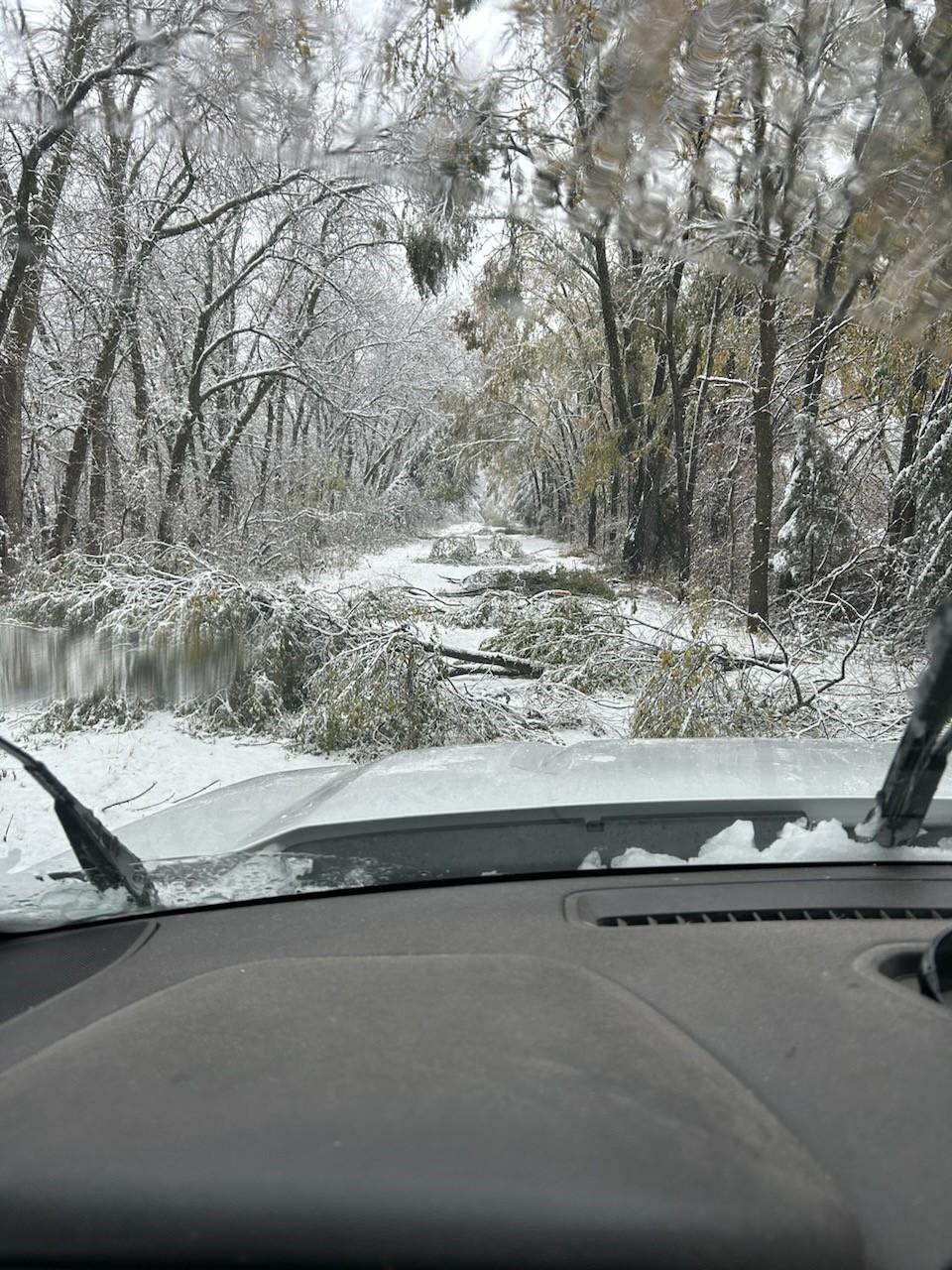
Why was the Halloween snow so impactful?
While it didn’t compare to the 1991 Halloween Blizzard, this year’s Halloween snowstorm still caused hundreds of outages across Wright-Hennepin’s (WH) service territory.
Posted by Lauren Dublin on November 25, 2024
While it didn’t compare to the 1991 Halloween Blizzard, this year’s Halloween snowstorm still caused hundreds of outages across Wright-Hennepin’s (WH) service territory.
Many members asked why such a small amount of snow caused such disruption, so we talked to our operations team to find out.

This graph above shows the temperature, wind speed, and precipitation on Halloween. Wind dropped off around noon, but a simultaneous drop in temperature and increase in precipitation resulted in wet, heavy snow falling on trees that still had foliage on them. The combined weight of foliage – rarely a factor during snowstorm season -- and wet, heavy snow broke branches and even caused trees to fall.
 Crews had to borrow a row boat to restore power to part of WH's service territory.
Crews had to borrow a row boat to restore power to part of WH's service territory.
The storm path traveled in a straight line from the southwest corner of the state, impacting other Minnesota cooperatives like McLeod, Stearns, Connexus, and East Central Energy similarly.
All of WH’s crews had been dispatched by 10:00 a.m., and when it became clear that outage jobs – nearly 200 of them – outweighed what WH crews would be able to accomplish alone, we called in mutual aid crews from Dakota Electric.
All crews were called in from the field between 11 p.m. and midnight, while one WH crew that had been sent home at 6 p.m. returned to work through the overnight hours. What was originally planned to be a day trip for Dakota Electric’s two crews turned into an overnight, and they returned at 6 a.m. with WH’s crews to help a second day.

Restoration work is done in a manner that will restore power to the most people at once. Once assigned to an outage job, crews generally start with feeders, which support hundreds or thousands of members. From there, they’ll move to tap lines, which provide power for about 50 to 150 members. After that they’ll start work on transformers, which power five to 10 members, and from there work on individual services.
This process is why sometimes your neighbors will have their power restored before you do. If your neighborhood’s power went out due to a fuse blowing on a feeder, but you also have a tree down on your line, restoring power to the feeder will fix your neighbor’s outage, but doesn’t fix the tree on your line. Because there’s still a problem “down the line” from the feeder, your power hasn’t been restored yet.
But efficiency is also a factor in the restoration process, since crews driving all around restoring power to, for example, only feeders, then circling back for tap lines wouldn’t always make sense, and there are exceptions for members who have life support and safety critical services.
In an average day, WH’s front desk answers about 200 phone calls. During the Halloween outage, they answered over 800. To report an outage, members are encouraged to call our 24/7 automated hotline, (763) 477- 3100. Members can also find information about outages on our social media, and outage.whe.org.

As with every storm, WH conducts a debrief and reviews strengths and opportunities to improve our service to you, the member. Providing safe, reliable, affordable power is WH's priority.
Thanks for being a member!

